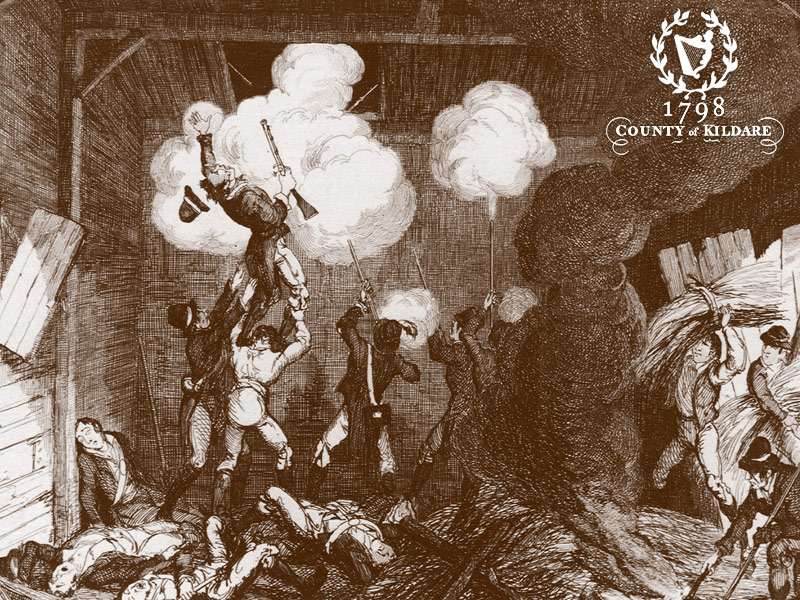Rebellion Towns & Villages

Surrender
On Tuesday night the 9th of July, the last remnants of the great Wexford/Wicklow army left their camp at Whelp Rock and marched into County Kildare. They joined Aylmer’s army on the 10th of July and spent the night in the camp at Timahoe, where it was decided to attack Clonard the following morning. Some of the more militant of the Kildare men like John Doorly of Lullymore, marched northwards into Meath in an attempt to rouse the country.
At approximately 11 a.m. on the morning of the 11th of July, around 4,000 rebels attacked a fortified house at Leinster Bridge near Clonard. Under the command of Lieutenant Tyrell, the garrison consisted of a meagre force of about 40, including some of Tyrell’s family. A desperate struggle lasting nearly 6 hours ended in defeat for the rebels. The rebels had 160 killed and 60 wounded, whereas the loyalists had 2 killed and 3 wounded, one of whom died later. The rebels retreated to Carbury where they spent the night.
The next morning, the 12th of July, this force crossed back into Meath and camped at Knockderrig Hill. Here they were surprised and routed by the military under Lieutenant Colonel Gough. He reported that they were commanded at Knockderrig by “Colonel Aylmer, Captain Dooley, Kerns, a priest, Captain Looby and Fitzgerald”.
Although spelt differently, Gough was undoubtedly referring to Doorly and Luby.
They returned to Timahoe shortly after and Aylmer, Luby and Fitzgerald surrendered themselves at Sallins on Sunday 21st July; leaders of the last major rebel army in the field until the arrival of Humbert in August.
The rebellion in County Kildare was over.
Rebellion Towns & Villages
Naas | Ballymore | Old Kilcullen | Knockaulin | Narraghmore | Ballitore | Athy | Monasterevin | Kildare Town | Rathangan | Gibbet Rath | Clane | Prosperous | Timahoe | Ovidstown | Surrender
